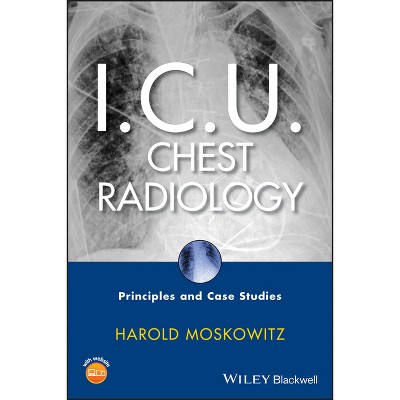Sponsored

Neurovascular Examination - by Andrei V Alexandrov (Hardcover)
In Stock
Sponsored
About this item
Highlights
- The use of neurovascular ultrasound is of increasing importance in neurological practice, both for radiologists and increasingly by neurologists themselves.
- About the Author: Andrei V. Alexandrov, MD, RVT, Assistant Professor of Neurology and Radiology, Director, STAT Neurosonology Service and Center for Noninvasive Brain Perfusion Studies, Stroke Program, University of Texas-Houston Medical School, Houston, TX, USA.
- 216 Pages
- Medical, Diagnostic Imaging
Description
Book Synopsis
The use of neurovascular ultrasound is of increasing importance in neurological practice, both for radiologists and increasingly by neurologists themselves. Written by the world's most renowned expert, this book explains- ultrasound examination of a stroke patient
- scanning protocols
- interpretation of the results
Case examples (with a standard template presentation correlating presentation to waveform output) reinforce the book's practical nature.
Illustrated with photos of the tests, explanations, and with actual waveforms, images, and result interpretation, and enhanced with 'pearls' and 'avoiding pitfalls' features, it is a practical reference for those learning ultrasound as well as those using ultrasound in their practices.
From the Back Cover
Stroke is a complex and dynamic process
When a full neurological examination is not a feasible option how do you:
- detect stroke;
- understand its mechanism;
- tailor treatment strategies; and
- preserve brain tissues to encourage functional restoration?
Neurovascular Examination answers these questions and shows how you can integrate ultrasound imaging technology into your practice to improve stroke outcomes.
Written by Dr Alexandrov, a world renowned expert on fusing neurological expertise with the insights offered by real-time ultrasound, this book explains:
- rapid and focused neurological and ultrasound examination of a stroke patient
- applied principles of physics, hemodynamics, and scanning protocols
- interpretation of the results with differential diagnosis
- case-based problem solving
The use of neurovascular ultrasound is of increasing importance for directing neurologists to the vascular obstruction, the pathological process and, most importantly, the dynamics of cerebral blood flow after the event. This allows development of short and long term management plans for that specific patient.
Throughout Neurovascular Examination the functional significance or hemodynamic effects of vascular lesions are emphasized. Stroke is presented as a dynamic process that needs careful and expert monitoring for optimal management. The how-to approach emphasizes essential concepts over mathematical complexities. A straightforward explanation of the physics of flow sets the scene for clinical action and common hemodynamic scenarios. You will learn how to differentiate key physiological details that are beyond the static, anatomical limits of other imaging modalities.
Case examples with a standard template format correlate presentation to waveform output. Featuring test photos, explanations, actual waveforms, images, result interpretation, 'pearls' and 'avoiding pitfalls' features throughout, Neurovascular Examination enables you to gain better knowledge of your patient's stroke so your patient has a better chance of recovery.
About the Author
Andrei V. Alexandrov, MD, RVT, Assistant Professor of Neurology and Radiology, Director, STAT Neurosonology Service and Center for Noninvasive Brain Perfusion Studies, Stroke Program, University of Texas-Houston Medical School, Houston, TX, USA.











